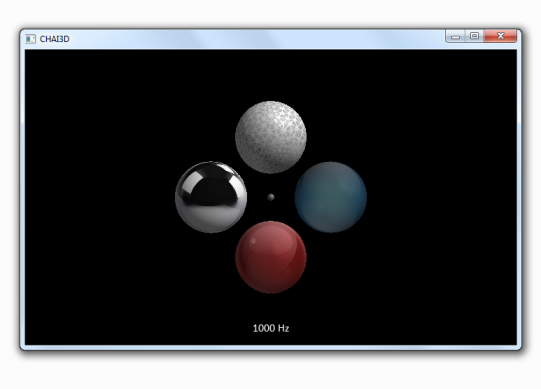CHAI3D

Tool Summary
| General Purpose Information | |
|---|---|
| Year of First Releaseⓘ The year a tool was first publicly released or discussed in an academic paper. | 2003 |
| Platformⓘ The OS or software framework needed to run the tool. | Windows, macOS, Linux |
| Availabilityⓘ If the tool can be obtained by the public. | Available |
| Licenseⓘ Tye type of license applied to the tool. | Open Source (BSD 3-Clause) |
| Venueⓘ The venue(s) for publications. | EuroHaptics |
| Intended Use Caseⓘ The primary purposes for which the tool was developed. | Simulation |
| Hardware Control Information | |
|---|---|
| Haptic Categoryⓘ The general types of haptic output devices controlled by the tool. | Force Feedback |
| Hardware Abstractionⓘ How broad the type of hardware support is for a tool.
| Consumer |
| Device Namesⓘ The hardware supported by the tool. This may be incomplete. | omega.x, delta.x, sigma.x, Phantom, Novint Falcon, Razer Hydra |
| Body Positionⓘ Parts of the body where stimuli are felt, if the tool explicitly shows this. | N/A |
| Interaction and Interface Information | |
|---|---|
| Driving Featureⓘ If haptic content is controlled over time, by other actions, or both. | Action |
| Effect Localizationⓘ How the desired location of stimuli is mapped to the device.
| Target-centric |
| Media Supportⓘ Support for non-haptic media in the workspace, even if just to aid in manual synchronization. | Visual, Audio |
| Iterative Playbackⓘ If haptic effects can be played back from the tool to aid in the design process. | N/A |
| Design Approachesⓘ Broadly, the methods available to create a desired effect.
| DPC, Process, Library |
| Interaction Metaphorsⓘ Common UI metaphors that define how a user interacts with a tool.
| N/A |
| Storageⓘ How data is stored for import/export or internally to the software. | None |
| Connectivityⓘ How the tool can be extended to support new data, devices, and software. | API, Device Template |
Additional Information
CHAI3D is a C++ framework for 3D haptics. Users can initialize a scene, populate it with virtual objects, and set the properties of those objects using built-in haptic effects, such as “viscosity” and “magnet”. It also uses OpenGL for graphics rendering an OpenAL for audio effects. CHAI3D can be extended to support additional haptic devices using the included device template.
For more information on CHAI3D, please consult the website, the documentation, and the EuroHaptics abstract.